The 30 Richest Places to Live in Colorado: State’s Most Affluent Communities
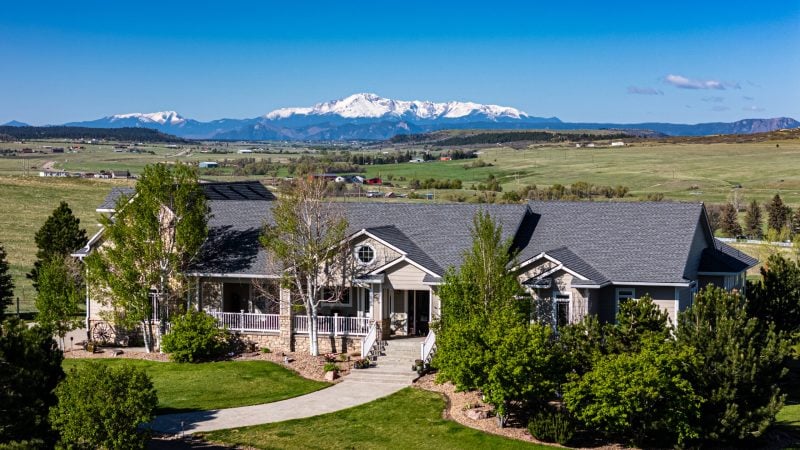
Colorado ranks among the wealthiest states in the nation, with diverse communities ranging from bustling metropolitan suburbs to exclusive mountain resort towns.
The state’s economic prosperity stems from thriving industries, natural resource abundance, and its appeal as a destination for high-earning professionals and entrepreneurs.
Identifying the richest places to live in Colorado reveals a mix of Denver metro area suburbs, mountain communities, and historic towns that offer exceptional quality of life alongside significant wealth concentration.
These communities attract residents through various factors including proximity to employment centers, outdoor recreation opportunities, excellent schools, and luxury amenities.
Understanding where Colorado’s wealthiest residents choose to live provides insight into the state’s economic landscape and lifestyle priorities.
Here are the 30 richest places to live in Colorado:
1. Cherry Hills Village
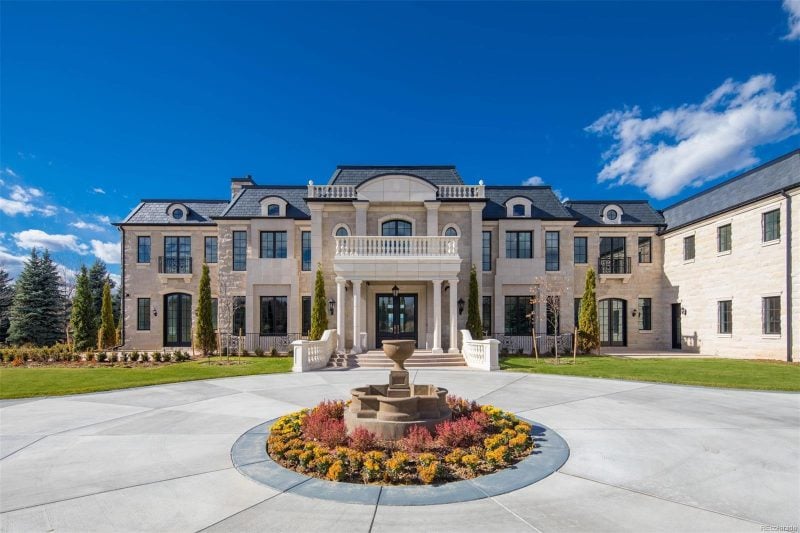
Cherry Hills Village stands as Colorado’s wealthiest community, with a median household income of $250,000. The affluent Denver suburb consistently ranks among Bloomberg’s annual list of America’s richest places.
Home values reflect the area’s exclusivity. The median home value reaches $1,919,500, with many properties listed just below $2 million. Luxury estates often exceed 10,000 square feet and feature premium amenities.
The community houses 6,366 residents with a median age of 47.9 years. Individual income averages $176,847 according to census data.
World-class golf courses and expansive estates define the neighborhood’s character. Many of Colorado’s most prominent residents choose Cherry Hills Village for its proximity to Denver and spacious properties.
The village represents the pinnacle of Colorado luxury suburban living, combining prestigious amenities with convenient access to metropolitan Denver.
2. Aspen (Pitkin County)
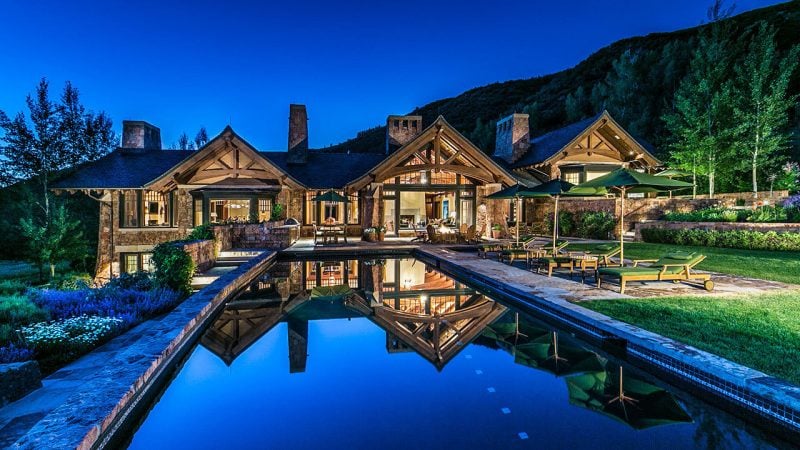
Aspen stands as Colorado’s most expensive place to live. Pitkin County holds the second-highest position among America’s wealthiest counties.
The area attracts extraordinary wealth. Dozens of billionaires own property in Aspen, with their collective net worth exceeding $335 billion.
Per-capita income in Pitkin County reached $224,772 in 2022. This figure ranks third highest nationally, demonstrating the area’s financial prominence.
Real estate prices reflect this affluence. The median home value sits at $2.37 million, while townhomes and condominiums top $3 million.
Billionaire property ownership drives much of this wealth concentration. Thirty-nine billionaires hold stakes in multiple Pitkin County properties, with several owning neighboring estates.
The county’s median income was $96,000, though investment income averaged $925,000. This disparity highlights the significant wealth gap between residents and property owners.
3. Vail (Eagle County)

Vail stands as one of Colorado’s most expensive places to live, with median home values reaching $1,956,078 according to recent data. The town ranks among the top ZIP codes in the state for property values.
Eagle County, where Vail is located, represents one of the wealthiest counties in Colorado. The area attracts affluent residents who value mountain living and world-class amenities.
The town’s economy centers around its renowned ski resort and luxury tourism industry. This drives up both property values and the cost of living throughout the area.
Vail’s real estate market reflects its status as a premier mountain destination. Properties in the area command premium prices due to limited inventory and high demand from wealthy buyers seeking mountain retreats.
4. Telluride (San Miguel County)

Telluride ranks as one of Colorado’s most expensive places to live. The town sits in San Miguel County with a population of 2,595 residents.
San Miguel County has a per capita income of $87,872. The median home value reaches $714,270 throughout the county.
ZIP code 81453 covers the Telluride area and houses more than 2,700 households. About 15.7% of these households earn substantial incomes that place them in higher economic brackets.
The town earned the nickname “The City of Gold” due to its mining history. Rich deposits were discovered in the historic Tomboy Mine, establishing Telluride’s early wealth foundation.
Telluride attracts affluent residents with its world-class skiing facilities and stunning mountain scenery. The town is nestled in the San Juan Mountains, offering premium recreational opportunities year-round.
5. Steamboat Springs (Routt County)

Steamboat Springs ranks among Colorado’s wealthiest communities with a population of 13,341. The ski resort town sits in Routt County, which consistently appears in the top five wealthiest counties statewide.
The median household income in Routt County reaches $53,612, significantly above Colorado’s state average of $47,203. This income disparity reflects the area’s strong tourism economy and high-paying seasonal employment opportunities.
Steamboat Springs carries a cost of living score of 138.4, making it 39% more expensive than the national average. Housing costs drive much of this premium, with the local real estate market showing sustained demand.
The town’s economy centers around year-round outdoor recreation and luxury tourism. Winter skiing and summer activities attract affluent visitors who often purchase second homes, inflating property values and local wealth metrics throughout the region.
6. Douglas County
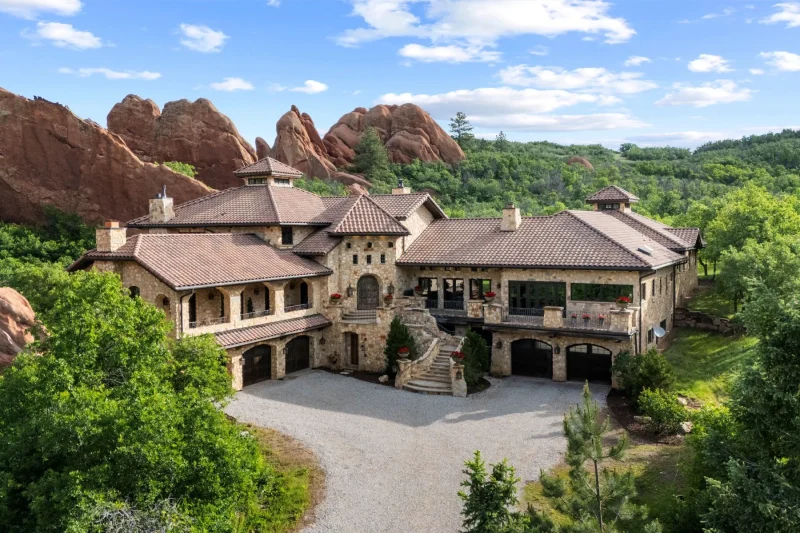
Douglas County stands as one of Colorado’s wealthiest regions with impressive economic indicators. The median household income reaches $145,700, which is 57.6% higher than the state average.
The county ranks second statewide for per capita income at $63,186. This places Douglas County well above most Colorado counties in terms of individual wealth.
Several communities within Douglas County command premium prices. Stepping Stone leads with median household incomes around $220,000, followed by Castle Pines Village at $219,000.
The county’s rolling hills and scenic open spaces contribute to its desirability. These natural features, combined with a thriving economy, make Douglas County highly sought-after for residents.
Douglas County’s wealth extends beyond individual communities. The overall prosperity reflects strong employment opportunities and attractive living conditions that draw affluent residents to the area.
7. Sterling Ranch
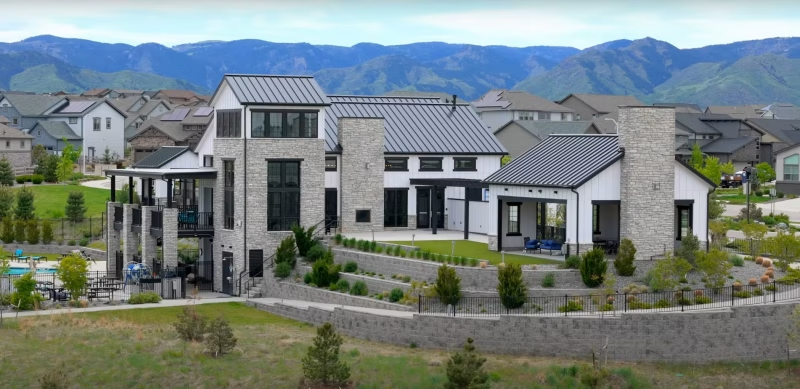
Sterling Ranch stands as Colorado’s top-selling master-planned community for 2024. This prestigious development near Littleton has earned national recognition, ranking among the Top 50 Master Planned Communities in the United States.
The community spans nine distinct villages radiating from a central town center. Residents enjoy access to over 30 miles of trails and 85 acres of scenic open space.
Sterling Ranch offers diverse housing options with new home designs catering to various lifestyles. The community blends city, suburban, and mountain living elements in one location.
High-end amenities include proximity to the University of Denver Golf Club. Recent developments include Alliance Residential’s construction of a 332-unit boutique apartment community.
The master-planned design emphasizes environmental stewardship and advanced technology integration. Sterling Ranch attracts affluent residents seeking premium amenities and scenic Colorado living.
8. Stepping Stone

Stepping Stone ranks among Colorado’s wealthiest communities with impressive median income figures. The town recorded a median household income of $212,831 according to recent census data.
This Douglas County community has a population of approximately 3,079 residents. The area maintains its status as one of the state’s most affluent places to live.
Individual median income in Stepping Stone reaches $104,327, placing it third statewide in this category. These income levels reflect the community’s strong economic foundation.
The town has earned recognition for its quality of life factors beyond just wealth. Safety ratings and overall livability contribute to its desirable status among Colorado communities.
Stepping Stone’s location in Douglas County provides residents access to both suburban amenities and proximity to larger metropolitan areas.
9. Superior
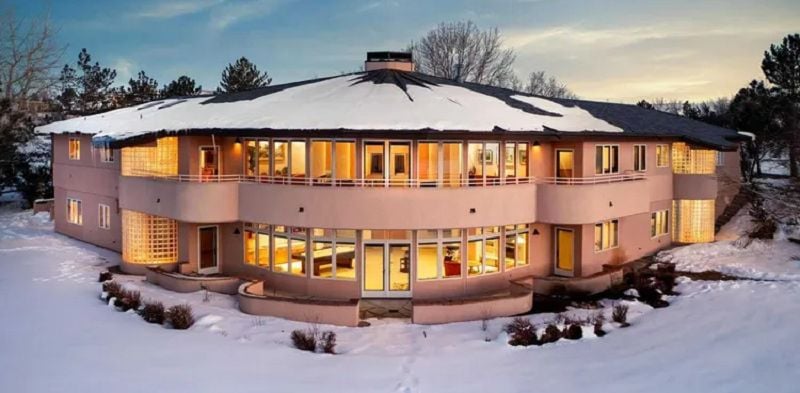
Superior stands as one of Colorado’s most affluent communities, consistently ranking among the state’s wealthiest cities. This small town of approximately 13,000 residents sits strategically between Boulder and Denver.
The median household income in Superior significantly exceeds both state and national averages. Many residents work in high-paying tech and professional sectors in nearby Boulder and the Denver metro area.
Superior offers an attractive blend of suburban comfort and mountain proximity. The town features well-maintained neighborhoods, quality schools, and easy access to outdoor recreation.
Housing costs reflect the area’s desirability and affluence. Property values remain strong due to the community’s prime location and limited housing supply.
The town’s proximity to major employment centers like Boulder’s tech corridor contributes to its wealthy resident base. Superior provides a quiet residential environment while maintaining convenient access to urban amenities.
10. Castle Rock
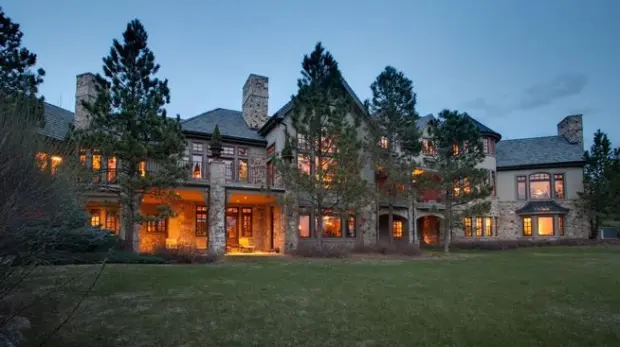
Castle Rock stands as one of Colorado’s most desirable communities, positioned strategically between Denver and Colorado Springs. The city serves as the county seat of Douglas County, attracting affluent residents seeking premium living options.
Money magazine recognized Castle Rock’s appeal by ranking it No. 28 on its list of 50 Best Places to Live in 2021-2022. This marked the fifth time the city earned this prestigious recognition.
The Meadows offers family-friendly neighborhoods with strong community connections. Castle Pines Village provides upscale gated community living with enhanced privacy and luxury amenities.
High-end neighborhoods include Bell Mountain Ranch, Diamond Ridge, and Sapphire Pointe. These areas feature luxury homes that attract wealthy residents drawn to Castle Rock’s mountain views and proximity to major urban centers.
The city combines urban conveniences with alpine lifestyle elements, making it attractive to professionals and families with substantial incomes.
11. Frederick
Frederick stands out among Colorado’s wealthiest communities with a population of 14,238 residents. The town has achieved remarkable safety statistics, recording zero violent crime in recent years.
Property crime rates remain exceptionally low compared to state averages. This combination of safety and prosperity attracts families seeking secure neighborhoods.
The community sits in Weld County, positioned strategically between Denver and Boulder metropolitan areas. Frederick’s location provides residents access to major employment centers while maintaining small-town character.
Housing developments in Frederick feature newer construction with modern amenities. The town’s growth has been carefully managed to preserve quality of life standards.
Local schools serve the community well, contributing to Frederick’s appeal among affluent families. The town’s infrastructure supports its growing population while maintaining efficient municipal services.
Frederick’s economic foundation includes both commuters to nearby cities and local business owners.
12. Centennial
Centennial consistently ranks as one of Colorado’s most desirable communities. The city earned the top position for best places to live in Colorado according to recent rankings.
The per capita income in Centennial reached $63,885 in 2022. This figure represents wealth relative to both Colorado and national standards.
For a family of four, this per capita income equates to approximately $255,540 annually. The community attracts residents seeking upscale suburban living with excellent amenities.
Buyers in Centennial find thoughtfully designed master-planned communities. These neighborhoods offer modern infrastructure and well-maintained residential areas.
The city combines financial prosperity with quality of life factors. Centennial provides access to top-rated schools, parks, and recreational facilities that appeal to affluent families.
13. Lone Tree
Lone Tree ranks among Colorado’s wealthiest communities, consistently appearing on lists of the state’s richest cities. This Denver suburb attracts affluent residents with its upscale neighborhoods and high-end amenities.
The median home value in Lone Tree reaches $714,310, significantly above the national average. Recent data shows typical home values around $904,413 in certain areas, though prices experienced a slight 1.8% decrease over one year.
Residents enjoy substantial median incomes of $143,684. The community maintains its reputation as an expensive place to live, with costs running 14% higher than the national average.
Lone Tree offers quality schools, safe neighborhoods, and proximity to Denver’s business centers. The city combines suburban comfort with urban accessibility, making it attractive to high-earning professionals and families seeking premium living conditions in the Denver metropolitan area.
14. Severance
Severance ranks among Colorado’s wealthiest communities with a population of 5,362 residents. The town maintains an exceptionally low crime rate with almost no violent crime reported.
Property crime has seen a minor increase in recent years but remains relatively low. This small community offers residents a safe environment while maintaining proximity to larger metropolitan areas.
The town’s location in northern Colorado provides access to both urban amenities and rural charm. Severance benefits from its strategic position near major employment centers while preserving a small-town atmosphere.
Residents enjoy lower population density compared to larger cities while still having access to quality services. The community attracts families and professionals seeking a quieter lifestyle without sacrificing economic opportunities.
15. Broomfield
Broomfield stands out as one of Colorado’s wealthier communities with a median household income of $115,049. This figure significantly exceeds the national median income.
The city ranks third among Colorado counties by per capita income at $60,862. This positions Broomfield among the state’s most affluent areas.
Broomfield attracts both families and professionals seeking quality neighborhoods. The community offers multiple residential areas that cater to different lifestyle preferences.
The city’s economic strength stems from its strategic location and diverse employment opportunities. Many residents benefit from proximity to major business centers while enjoying suburban living.
Broomfield’s wealth reflects in its well-maintained infrastructure and community amenities. The area continues to draw high-income households seeking Colorado’s mountain lifestyle with urban conveniences.
16. Highlands Ranch
Highlands Ranch ranks as one of Colorado’s wealthiest communities with a median household income of $139,441. This affluent suburb consistently attracts high-earning residents seeking upscale living.
The community earned recognition from MSN in December 2019 as the best place to live in Colorado. This designation reflects its strong appeal among affluent families and professionals.
Housing costs reflect the area’s wealth, with expensive suburban properties throughout the community. The cost of living sits 18% higher than the national average.
Renters in Highlands Ranch earn a median household income of $102,946 according to 2022 Census data. This demonstrates the area’s consistent appeal to high-income residents across different housing situations.
The community features premium neighborhoods including Northridge, Eastridge, and Verona. These areas contribute to Highlands Ranch’s reputation as a top destination for wealthy Colorado residents.
17. Boulder
Boulder ranks among Colorado’s most expensive cities, with median home prices exceeding $1.2 million. The city attracts wealthy residents through its combination of natural beauty and economic opportunities.
Tech industry growth has brought high-income professionals to the area. The proximity to outdoor recreation and quality of life factors drive demand for luxury housing.
Pine Brook Hills represents one of Boulder’s most exclusive neighborhoods. Properties in this area often exceed $2 million, offering mountain lifestyle amenities.
Areas like Gunbarrel and Crisman feature higher household incomes compared to other parts of the city. Boulder’s cost of living significantly exceeds state averages, primarily due to housing costs.
The city pioneered open space preservation, taxing itself to protect over 45,000 acres. This commitment to environmental protection enhances property values and attracts affluent buyers seeking pristine surroundings.
18. Greenwood Village
Greenwood Village stands as one of Denver’s wealthiest suburbs and ranks among Colorado’s most expensive places to live. The community has a population of 15,485 residents with a median age of 46.2 years.
The mean household income reached $258,780 in 2023. Individual income averages $110,266 according to census data.
Home values reflect the area’s affluent status. The average home value hit $1,639,158 in June 2025. Some ZIP codes within Greenwood Village show median home prices around $905,390.
Located in Arapahoe County, Greenwood Village offers residents an urban-suburban lifestyle mix. The city receives high rankings for quality of life, education, and job market opportunities.
Greenwood Village consistently appears on lists of Colorado’s richest cities alongside Cherry Hills Village and Castle Pines.
19. Cherry Creek
Cherry Creek stands as one of Denver’s most prestigious neighborhoods. The area attracts affluent residents with its upscale shopping and dining options.
According to recent census data, Cherry Creek residents have a median household income of $125,634. The neighborhood’s proximity to downtown Denver makes it highly desirable for wealthy professionals.
Home prices in Cherry Creek range significantly based on property size and location. The area features luxury condominiums, townhomes, and single-family residences.
The neighborhood’s walkable streets and high-end retail district contribute to its appeal. Cherry Creek offers residents access to art galleries, fine restaurants, and boutique shopping.
Many of Denver’s business leaders and executives choose to live in Cherry Creek. The area maintains its reputation as a symbol of affluence in the Denver metropolitan region.
20. Ken Caryl
Ken Caryl ranks as one of Denver’s most desirable suburbs with a population of 33,407 residents. The planned community sits 18 miles southwest of downtown Denver in Jefferson County.
The median household income in Ken Caryl Ranch Plains reaches $133,140, significantly above Colorado’s median income. This affluent suburb attracts high earners seeking quality living near the Rocky Mountain foothills.
Real estate prices reflect the area’s desirability. The median home price stands at approximately $550,000, with properties ranging from $99,000 to $1.3 million across 11 distinct neighborhoods.
5280 Magazine recently recognized Ken Caryl as a top Denver suburb in 2025. The community draws professional athletes and other wealthy residents who value its location and amenities.
Ken Caryl offers an upscale suburban lifestyle with mountain views and proximity to Denver’s employment centers.
21. Gleneagle
Gleneagle ranks as a notable affluent community in Colorado, located as a suburb of Colorado Springs in El Paso County. The area has a population of 6,207 residents with a median age of 43.8.
The median home price in Gleneagle reaches $428,499, which exceeds the national median of $318,879. This pricing places the community well above average housing costs nationwide.
Individual income averages $53,411 in the area. To live comfortably in Gleneagle, financial experts recommend a minimum annual income of $115,200 for families and $63,600 for single residents.
The community is recognized as one of the best places to live in Colorado. Gleneagle offers a suburban lifestyle with access to Colorado Springs amenities while maintaining its distinct character as an upscale neighborhood.
22. Basalt
Basalt ranks among Colorado’s most expensive places to live, with median home values reaching $1,365,473 according to recent data. The town sits in the Roaring Fork Valley, attracting wealthy residents seeking mountain luxury.
The cost of living in Basalt is 65% higher than the national average. It’s also 50% more expensive than typical Colorado cities.
Several premier neighborhoods define Basalt’s luxury market. Blue Lake, El Jebel, and Missouri Heights offer high-end properties. Old Town Basalt provides historic charm with modern amenities.
The Stotts Mill neighborhood represents new development in the area. This community has generated significant interest among buyers seeking contemporary mountain homes.
Basalt’s proximity to Aspen enhances its appeal to affluent residents. The location provides access to world-class skiing and outdoor recreation while maintaining a distinct community character.
23. Snowmass Village
Snowmass Village ranks among Colorado’s most expensive real estate markets. The typical home value reaches $2,131,627, placing it in the upper tier of luxury mountain communities.
Home values increased 3.7% over one year and surged 108.8% over five years. This dramatic appreciation reflects strong demand for mountain properties in the area.
The median household income stands at $100,183, significantly above Colorado’s state average of $60,358. This income level supports the community’s high cost of living and premium housing market.
Located in Pitkin County near Aspen, Snowmass Village offers luxury mountain living with world-class skiing amenities. The town maintains a small population of approximately 3,048 residents.
ZIP code 81615 represents one of Colorado’s most expensive postal codes, with median home values exceeding $1.76 million throughout the area.
24. Longmont
Longmont ranks among Colorado’s wealthier communities with a median household income of $98,327. This income level significantly exceeds the national median, positioning residents well above average American earners.
The city features several affluent neighborhoods that drive up property values. Chance Acres/Altona and Terry Lake represent some of the most expensive residential areas in Longmont.
Other high-end neighborhoods include Lower Clover Basin/Renaissance and Silver Meadows/Meadow Mountain. These areas attract buyers seeking premium housing options within the Boulder County region.
Longmont’s cost of living runs 7% higher than the national average. The city benefits from Boulder County’s strong economy while maintaining more affordable housing than nearby Boulder itself.
Residents face an 8% sales tax rate, among the highest in Colorado. Despite this tax burden, Longmont’s combination of solid incomes and desirable location continues attracting affluent families to the area.
25. Durango
Durango ranks as the second most expensive community in Southwest Colorado. The city’s cost of living runs approximately 4% higher than the national average, though it remains about 5% below Colorado’s overall average.
Housing costs drive much of Durango’s elevated living expenses. The real estate market features several upscale neighborhoods that attract affluent residents.
Historic Downtown stands out as one of the most expensive areas. Ptarmigan Farms and Red Rock Ranch also command premium prices for luxury living.
The Glacier Club represents another high-end neighborhood option. Three Springs and Edgemont Highlands round out the city’s more expensive residential areas.
Durango’s appeal stems from its mountain town atmosphere and outdoor recreation opportunities. The combination of scenic beauty and limited housing supply keeps property values elevated compared to surrounding areas.
26. Littleton
Littleton sits south of Denver with a population of 45,092 residents. This suburb in Arapahoe County ranks among Colorado’s desirable places to live.
The city shows significant income variation across neighborhoods. Median income ranges from $22,850 to over $250,000 depending on location.
Higher income areas concentrate in the western parts of the city. The Ken Caryl area represents the most western portion of Littleton, bordering the foothills.
Ken Caryl stands out as the most sought-after region within Littleton. Its location near natural areas adds to its appeal among affluent residents.
Littleton costs 2% more than the national average to live in. The city remains 7% less expensive than typical Colorado living costs.
The area offers outdoor recreation opportunities near Chatfield Reservoir and Bowles Reservoir. These features contribute to property values and resident satisfaction.
27. Fort Collins
Fort Collins ranks as the 27th richest place to live in Colorado. The city maintains a median home price of $428,000 according to recent data.
The Fort Collins metro area has a gross metro product of $20.7 billion. The median household income reaches $71,297 for residents.
Living costs in Fort Collins run approximately 8% above the national average. The city’s population stands at 350,500 people across the metro area.
Fort Collins remains more affordable than Boulder, which has a median sales price of $1,141,000. This price difference makes Fort Collins attractive to those seeking Colorado mountain proximity without premium costs.
The city offers strong economic fundamentals with diverse employment opportunities. Fort Collins combines university town amenities with growing tech sector presence.
28. Louisville
Louisville ranks among Colorado’s wealthier communities with a median household income that places it in the top tier of the state’s most affluent cities. The city has a population of approximately 33,998 residents.
The average individual income in Louisville is $69,739, reflecting the community’s economic prosperity. This Boulder County city consistently attracts high-earning professionals and families.
Louisville’s real estate market ranks among the most expensive in Colorado and nationally. Home prices significantly exceed state and national averages, making it one of the pricier markets for buyers.
The cost of living in Louisville is 17% higher than the national average and 7% above Colorado’s average. Despite higher costs, the city remains popular for its quality schools and family-friendly atmosphere.
Louisville has earned recognition as a top place to live, ranking second in Money magazine’s best places list.
29. Erie
Erie ranks among Colorado’s wealthier communities, attracting affluent residents with its strategic location and quality lifestyle. The town sits in Weld County and offers a rural atmosphere while maintaining proximity to Denver and Boulder.
Housing costs in Erie reflect its desirable status. The most expensive neighborhoods include Candlelight Estates, Candlelight Ridge, Highview Ranch, and Erie Airpark.
Most residents own their homes rather than rent. The community provides excellent amenities and maintains strong property values.
Erie’s cost of living runs slightly below the national average at 2% less than typical U.S. cities. This makes it an attractive option for families seeking upscale living without extreme expenses.
The town combines small-town charm with access to major employment centers. Its location in the foothills provides scenic views and outdoor recreation opportunities.
30. Black Hawk
Black Hawk stands as one of Colorado’s most historically significant wealthy communities. The town earned recognition as part of the “Richest Square Mile on Earth” during the gold mining boom of the 1870s.
This former mining camp transformed from a collection of tents to substantial log cabins and permanent buildings. Black Hawk served as the largest urban area in the Colorado Territory during its peak mining years.
The community shares its wealthy heritage with neighboring Central City. Together, these towns formed what was once considered the most important economic center in Colorado Territory.
Today, Black Hawk maintains its reputation as an affluent mountain community. The town’s gaming industry and tourist attractions contribute to its continued economic prosperity in the modern era.
Factors Contributing to Wealth in Colorado
Colorado’s wealth concentration stems from diverse economic drivers including technology and energy sectors, high educational attainment rates, and robust real estate appreciation driven by population growth and limited housing supply.
Economic Drivers and Industries
Colorado’s economy benefits from multiple high-value sectors that generate substantial wealth for residents. The state maintains low unemployment rates with steady job creation across key industries.
Technology and aerospace companies have established significant operations throughout the Denver-Boulder corridor. These sectors offer high-paying positions that drive median household incomes upward in surrounding communities.
The energy sector contributes substantially to wealth generation. Oil, natural gas, and renewable energy operations provide both direct employment and investment income for residents.
Tourism and recreation industries generate wealth in mountain communities. Ski resorts, outdoor recreation businesses, and hospitality services create economic opportunities in areas like Aspen and Steamboat Springs.
Financial services and real estate development have expanded alongside population growth. These industries support wealth accumulation through both employment and investment opportunities.
Educational Attainment and Employment
Educational levels directly correlate with wealth distribution across Colorado communities. Many wealthy areas report that 57% of residents hold advanced degrees.
Higher education rates translate into better employment opportunities and higher salaries. Communities with educated populations attract businesses seeking skilled workers.
Professional occupations dominate wealthy Colorado areas. Residents work in fields like medicine, law, engineering, and business management that command premium salaries.
Remote work trends have allowed high earners from coastal markets to relocate to Colorado while maintaining their income levels. This influx has increased local wealth concentrations.
Entrepreneurship thrives in Colorado’s business-friendly environment. Many residents build wealth through business ownership and startup ventures.
Real Estate Trends
Real estate appreciation has created substantial wealth for property owners across Colorado. Home values have risen consistently due to population growth and housing supply constraints.
Luxury housing markets have expanded significantly. Tax and policy changes have attracted wealthy buyers from other states, reinforcing growth in high-end properties.
Areas like Pitkin County show median home values of $2.37 million. Limited developable land in desirable locations drives continued price appreciation.
Investment income from real estate contributes significantly to household wealth. Pitkin County residents report average investment income of $925,000 annually.
Short-term rental markets in resort areas provide additional income streams for property owners. Vacation rental properties generate substantial returns in popular destinations.
Lifestyle and Community Amenities
Colorado’s wealthiest communities offer unparalleled access to world-class outdoor recreation, sophisticated cultural venues, and premium public services that justify their premium price tags.
Access to Outdoor Recreation
Mountain communities like Aspen and Telluride provide direct access to premier ski slopes and year-round alpine activities. Residents enjoy private ski club memberships and exclusive mountain access that can cost upwards of $100,000 annually.
Golf and country clubs dominate affluent areas like Cherry Hills Village and Edwards. These communities feature championship golf courses designed by renowned architects like Jack Nicklaus and Tom Fazio.
Trail networks and open space preservation characterizes wealthy enclaves. Mountain Village maintains over 50 miles of hiking and biking trails, while Cherry Hills Village preserves 30% of its land as open space.
Water recreation attracts residents to communities near reservoirs and rivers. Durango offers exclusive fly-fishing access along the Animas River, with private guides charging $800-1,200 per day.
Cultural Attractions and Events
World-renowned festivals define several wealthy Colorado communities. Aspen hosts the Aspen Music Festival, Food & Wine Classic, and Ideas Festival, drawing international celebrities and thought leaders.
Art galleries and museums cluster in affluent areas. Aspen features over 20 high-end galleries, while Vail showcases rotating exhibitions at the Vail Arts District.
Performing arts venues provide year-round entertainment. The Wheeler Opera House in Aspen and the Vilar Performing Arts Center in Beaver Creek host Grammy-winning artists and Broadway productions.
Exclusive social clubs offer networking opportunities for residents. Private clubs in these communities require initiation fees ranging from $25,000 to $150,000, plus annual dues.
Quality of Public Services
Educational excellence characterizes wealthy districts. Cherry Hills Village students attend highly-rated Douglas County schools, while Aspen Elementary consistently ranks in Colorado’s top 5%.
Emergency response times average under 4 minutes in affluent communities compared to 8-12 minutes statewide. These areas maintain well-funded fire departments and medical facilities.
Infrastructure maintenance receives priority funding. Roads, utilities, and public facilities undergo regular upgrades financed by higher property tax revenues.
Municipal services include enhanced snow removal, landscaping, and security. Some communities employ private security firms to supplement local police presence.





